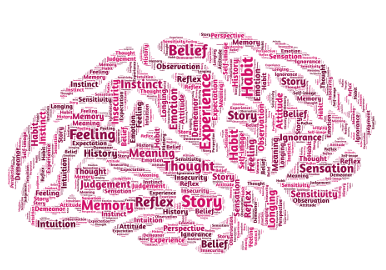|
What are the strengths of Hypnotherapy as a treatment modality?
Having written a short piece on the myths of hypnotherapy I also wanted to explore the strengths of the tool that is hypnotherapy. It has a very many strengths, and can prove a very powerful rapid treatment choice for certain psychologically healthy individuals allowing them to access swift change if the profound desire is there within and especially if they have gotten to the point of being sick and tired of their old way of being. As I have mentioned previously on this site hypnotherapy is not a panacea, so when the individual who phones for an appointment and believes that they can shed pounds simply by coming to one session, without changing habits or behaviours and that they can go home and eat what they like afterwards – I obviously decline to work with them. If someone is not motivated to change and unwilling to engage and take responsibility exercising their will and personal strength, they may as well burn their money or invest it elsewhere and really that is what therapy really is an investment in the Self. You work with it. It will not do anything alone, engagement and co-operation with principles, tools and exercises is essential. (Be warned - there are many lay hypnotists out there who will make all kinds of promises. Simply remember the old adage “If it sounds too good to be true – it probably is!”). There is something about hypnotherapy which can really facilitate and enhance psychotherapeutic treatment. Integrating elements of CBT and hypnotherapy seems to produce very favourable results indeed. Alladin (2008, pp. 10-16) outlines the elements of hypnotherapy that are empirically informed and supported.
Finally - remember- all hypnotherapy is self hypnotherapy. Individuals are hypnotising themselves all the time everyday with their inner dialogue. Choose to speak kindly and with compassion to yourself! Become aware of that voice within.
There are so many myths in popular culture and society that create beliefs that have no foundation in reality. Television and film portray hypnosis as something quite fantastical and dramatic - whether it is positive or negative.
The simple truth is that what is termed the state of hypnosis is in fact the brain of the individual shifting from Beta to an alternating Alpha and Theta frequency. Not exactly exciting! Everyone experiences variations in brain wave states frequently throughout the day. Nothing special! Beta is an alert state of consciousness, alpha is a relaxed state, theta is a deeply relaxed state and delta is the state of sleep. Everyone is going in and out of trance/hypnosis all day every day, by themselves, automatically and organically, as it is a natural state of being for humans. In essence there is no such thing as hypnosis - as everything is hypnosis and nothing is hypnosis (Heller 1987). The trance state can be cultivated in many ways and not simply via hetero-hypnosis. The brain is an electrochemical organ and we now know that neuroplasticity (the brain's ability to create new patterns of learning and growth) continues over an individual's lifetime. Hypnosis is a tool that enhances neuroplasticity. Brain-wave Entrainment, meditation, driving, jogging, watching TV, dance, yoga, mindfulness and many other activities can help manipulate our brainwaves and this is measurable on an EEG (Jemmer 2009). So what kinds of myths are out there? Myth One - The Hypnotherapist is some powerful, magical, gifted individual who can miraculously cure you of whatever ails you. FACT - Anyone who has trained ethically in Hypnotherapy will be the first to say they are as human as you are! So no, I am not all powerful, I do not have a magic wand and no, I am afraid I cannot perform an "eternal sunshine of the spotless mind" to make you forget that bad break up and erase all memory of your ex from your mind. Besides Hypnotherapy is not recommended for anyone going through the process of grieving. I also cannot read your mind and I cannot make you do anything against your will. Nor can I predict you future... Here is the big secret - HYPNOTHERAPY WILL ONLY GIVE YOU WHAT YOU WANT. If motivation and desire to change are present and you have a goal, Hypnotherapy can help you learn new ways of being and unlearn old habitual patterns. People unconsciously go in and out of trance every day. With hypnotherapy, one chooses to enter a trance consciously, with intention and for a purpose. Myth Two - Hypnotherapy will only work with people perceived as gullible and weak willed, or, with those who are completely uninhibited. FACT - Entering a conscious therapeutic trance state is all about concentration, heightened states of awareness and focus. Studies show that an individual's perceived intelligence is not a factor in determining hypnotisability (Hilgard, Ernest R. et al 1961) (Morgan & Hilgard 1978) (Piccione, Hilgard & Zimbardo 1989). Every individual on the planet has the potential to be hypnotised and everyone goes in and out of trance states everyday naturally and organically. It is part of being human. Anyone who wants to experience formal hetero-hypnosis (hypnosis with the assistance of a therapist) can do so. Research shows that approximately somewhere between 17-30% of individuals are highly resistant to hypnotherapy by choice. No one can ever be hypnotised against their will. Individuals who choose to volunteer and take part in stage shows are obviously extraverts who enjoy being the centre of attention and entertaining anyway. No one will ever change personality under hypnosis. No one will ever do anything that they would not do while fully conscious. Myth Three - While experiencing Hypnosis one is in a state of sleep or unconsciousness. FACT - During a Hypnotherapy session an individual is fully conscious and aware of what is going on. Awareness and focus increase substantially. It is a learning state and the individual - while feeling very relaxed, and peaceful becomes more focussed as the mind becomes calm, meditative and de-cluttered of extraneous thoughts. The brain enters the alpha (8-15 hertz) / theta (4-7 hertz) rhythms, depending on how deep a trance one enters and this varies from person to person as no two individuals are alike. Myth Four - A person must enter a very deep trance state for change to occur. FACT - The majority of hypnotic therapy takes place in a light to medium trance state as responsiveness to the therapist, awareness, focus, concentration and capacity to absorb suggestion is quite necessary. Myth Five - Hypnosis and Hypnotherapy will create rapid change in one or two sessions. FACT - In certain cases this is true, however, for the vast majority of individuals it takes a number of sessions. The magic number is different for every person. It is a therapeutic process and lasting change usually takes time. Myth Six - Hypnosis is something that is done to you. FACT - All hypnosis is Self Hypnosis. Myth Seven - All Hypnosis is the same. FACT - Old style generic "one size fits all" authoritarian hypnotherapy doesn't really work. Quality Hypnotherapy is tailored to the individual's needs, personality and based on solid psychological interventions, grounded in empirical evidence and utilises advanced communications patterns. Myth Eight - I will lose complete control. FACT - You can only enter hypnosis therapeutically if you are genuinely willing and want to engage the therapy. You choose it out of desire and motivation. You actually gain control rather than lose control. Hypnotherapy is not suitable for everyone. 1. Doidge, N. (2015). Hypnosis, neuroplasticity, and the plastic paradox. American Journal of Clinical Hypnosis, 57(3), 349-354. 2. Heller, S., & Steele, T. L. (1987). Monsters and magical sticks: There's no such thing as hypnosis? Falcon Press. 3. Jemmer, P. (2009). Getting in a (brain-wave) state through entrainment, meditation and hypnosis. Hypnotherapy Jour, 1. |
AuthorAnnie O'Brien M.Sc. MIACP MIHA has a Masters Degree in Integrative Counselling and Psychotherapy from Turning Point Institute and Dublin City University. This course is one of the leading training courses in Ireland and is recognised by the Irish Association of Counselling and Psychotherapy (IACP), the Irish Association of Humanistic and Integrative Psychotherapy (IAHIP) and the European Association for Integrative Psychotherapy (EAIP). Archives
June 2019
Categories
All
|


 RSS Feed
RSS Feed